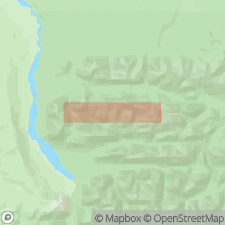
- Usage in publication:
-
- Mount Copleston Limestone*
- Modifications:
-
- Named
- Biostratigraphic dating
- Dominant lithology:
-
- Limestone
- Mudstone
- AAPG geologic province:
-
- Alaska Northern region
Summary:
Named for Mount Copleston, Shublik Mountains, northeastern Brooks Range, AK. Rocks were formerly Devonian part of upper member of Nanook Limestone. Type section designated along north-trending ridge in SW/4 sec.17 T2N R2E (69 deg 31.5'N, 145 deg 33.2'W) Mt. Michelson C-3 quad. Reference section lies along east-west transect near southern boundary of SE/4 SW/4 sec.13 T2N R26E (69 deg 31.2'N, 145 deg 38.2'W) Mt. Michelson C-3 quad. Occurs in western belt 2 km long and eastern belt, 12 km long. Consists of thin- to medium-bedded, dark-gray lime mudstone and bioclastic wackestone and packstone. Is 71.6 m thick at type section. Unconformably overlies Upper Ordovician strata at type in eastern belt and Middle Ordovician strata in Western belt. Appears to unconformably underlie Kekiktuk Conglomerate of Endicott Group. At type contains crinoid ossicles of Emsian and Eifelian age. Age appears to be restricted to Emsian (late Early Devonian) on basis of conodonts (GRONBERGI to SEROTINUS Zones).
Source: GNU records (USGS DDS-6; Menlo GNULEX).
For more information, please contact Nancy Stamm, Geologic Names Committee Secretary.
Asterisk (*) indicates published by U.S. Geological Survey authors.
"No current usage" (†) implies that a name has been abandoned or has fallen into disuse. Former usage and, if known, replacement name given in parentheses ( ).
Slash (/) indicates name conflicts with nomenclatural guidelines (CSN, 1933; ACSN, 1961, 1970; NACSN, 1983, 2005, 2021). May be explained within brackets ([ ]).

